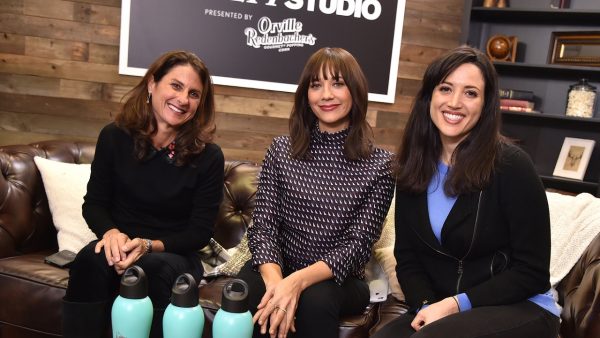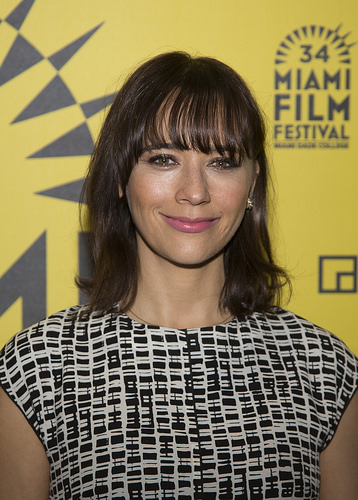
I first heard that a sequel to Hot Girls Wanted was being made about three months ago. A performer I followed posted about being approached for filming. He rejected the offer immediately. I shared his discomfort.
The first Hot Girls Wanted was a documentary film carefully designed to manipulate the viewer into feeling disgust towards the porn industry. It followed a household of porn models, predominantly new to the industry, for several months as they journeyed into what Hot Girls Wanted creator Rashida Jones referred to as “pro-amateur porn.” While the filmmakers claimed a totally unbiased approach, I watched the documentary taking note of each carefully placed, mid-sentence cut designed to de-contextualize industry critiques; each depressing tone played at low volumes creating emotionally charged responses to a comment; each unsourced statistic and each citation from disreputable websites.
Porn performers responded harshly yet appropriately to the documentary. They aimed their critiques primarily at the film’s producer, actress Rashida Jones. With the announcement of a sequel came promises of an improved, non-stigmatizing, and nuanced discussion of the porn industry.
It was not delivered.
I will admit, I did not watch the new six-part series from start to finish. The episodes about online dating and sexual assault felt out of place, inappropriately lumped into what was otherwise a focused discussion of the porn industry. What I did watch, however, was enough for me to see the first Hot Girls Wanted’s old methods at play.
The series featured four episodes about the porn industry: one interviewing two porn producers, self-identified feminist creator Erika Lust and erotic photographer Holly Randall, working with her famous mother Suze Randall; one following a camgirl and porn performer, Bailey Rayne, and a small group of camgirls recruited to expand their work into mainstream porn under Rayne’s manager; one following the manager of the original Hot Girls Wanted crew in his journey to create a new porn site, with a heavy emphasis on black male performers in porn; and finally, one which follows a camgirl on a trip across the world to meet a long-standing client in person.
The show depicts every negative experience the interviewees relate as the fault of the industry itself, rather than representative of one individual’s story. The editors carefully choose footage to present managers as controlling and demanding, and performers as naïve. Shots often include blank expressions from performers who are seemingly unaware of the camera continuing to roll, punctuating statements about beginning a “first shoot” in the industry or a comment on drug or alcohol use. We, the audience, are made to pity the porn workers within minutes of the opening, particularly during episode three. The film editor inserts the word “empowered,” taken from as many recorded statements as possible, to play over and over again in the opening footage of Rayne greeting the workers she manages at the airport, making her look disingenuous when one of these workers inevitably runs into problems later, as if she’s promised more than she can deliver. Meanwhile, the screen text comments repeatedly on Rayne’s “recruitment” of these models, drawing parallels to the original film in which porn performers were hired cold off Craigslist, and ignoring the substantial previous webcam experience most of these models have which has already acquainted them with the industry. Concern from coworkers and their efforts to support each other are portrayed as “business minded” and ill-willed, with porn performers’ comments about solidarity with each other juxtaposed with discussions of money and competition. My notes throughout the series consistently mention the manipulative, foreboding music: played each time a performer begins a shoot, each time a performer comments on the stigma attached to having worked in the porn industry, each time a performer begins to negotiate their boundaries, and each time a performer discusses the existence of drugs or alcohol use in the industry.

Where the series most falls flat is the incredible lack of care in discussions of race in porn. The critiques of performers of color are presented as a condemnation of the entire porn industry, rather than a call for a cultural shift within it. The discussion is brief, and quickly returns to commentary on the usage of Viagra on set. The filmmakers seem to have come into this with an angle in mind, and look to have been disappointed when the interviewees don’t provide them with much support for that slant. The most frustrating thing about this is that there is an intense need for this racial discourse in the porn community today. This is the first opportunity this series has to say something beneficial and meaningful, but instead it shies away from constructive engagement with the issue. The series reeks of confirmation bias, and that bias takes focus away from important commentary as the show highlights more glamorous drama.
The reality is that negative experiences certainly exist in the porn industry and porn workers are desperately seeking opportunities for nuanced discussion allowing them to present complex lives. Heavy-handed portrayals such as Hot Girls Wanted: Turned On fail to present these realities.
In the show, sex workers seem to be held accountable for the failings of systems entirely outside their control. Statistics relating to sex education in schools point fingers back towards the porn industry, claiming porn as the primary source of teenagers’ sex education rather than focusing on the school systems’ failings; irrelevant statistics relating to the frequency of “violent acts” in porn are interjected between discussions of performers refusing to shoot particular genres; tube sites are continuously held up as examples of the industry rather than content-stealing enemies of it; cam girls are held responsible for the entitlement of their clientele. The heavy emphasis on sexual violence repeatedly ignores the consent of models involved and discussion is entirely focused on the supposedly inherent misogyny of it. The producers state that 90% of violent acts in porn target women, a statistic that is repeatedly quoted all over the internet yet never sourced, and does not appear to be reflected by the majority of porn sites. Many statistics cited on the show seem to be included for pure shock value—comparisons between traffic on major porn sites and news networks add no narrative value and yet are brought up repeatedly throughout the series. It almost reads as a demand for sex workers to create porn strictly within the series creators’ guidelines of acceptable viewing.
Porn producers are given a positive voice in the first episode of the series. But this voice is restricted to self-identified feminist producers who stand against the supposed inherent violence of mainstream pornography. Erika Lust speaks at great length on demanding authenticity from her performers by mainly hiring hobbyists and amateur performers. The show capitalizes on this by portraying the nerves of a new performer as a natural response to the horrifying experience of participating in porn rather than simple stage fright. Lust is shown approaching “professional” performers with an air of condescension. The episode also includes a scene in which Lust openly admits to her failure to present a diverse cast, but she ends up turning the blame for this onto other performers. Ultimately, Lust’s work represents all the same issues with “feminist” porn—disregard for labor rights, fetishization of “authenticity,” and racism—that have been discussed in the industry for some time. However, the show does nothing to condemn this lack of diversity or the limited scope of what is considered “acceptable” pornography in feminist circles. Instead, it celebrates this supposedly niche alternative, failing to recognize that this genre is both widespread and rife with many of its own complications and failures.
My concerns about the series peaked with a tweet from one of the featured performers stating that they were not told the name of the series they were being interviewed for, and tweets from models who had footage featured without their consent.
Hot Girls Wanted: Turned On, I will admit, is far more subtle than its predecessor. There is almost a sense of true dialogue at times, and some of the critiques presented feel unscripted and honest. The manipulation of the messages the performers share is underhanded and easy to miss. At the end of the day, though, this is a critique of porn as seen by Rashida Jones and her colleagues. This isn’t an honest experience of the porn industry, nor is it a discussion by porn workers or for porn workers. It is designed to be engaging to unaware civilians, who will not feel churning in their stomach viewing soundbites about “violent” or “degrading” content; who will not feel burning anger flood through them as STI testing is portrayed as a source of stigma rather than an effective safety measure; who will not feel disappointment as performers they have long adored are represented as heartless or cruel for their reactions in times of stress. The moments of honesty in HGW:TO are fleeting ones, wedged between long stretches of screen-time choreographed by the show-runners to fit their biases.
This documentary was never meant for us. We, who work in porn, were never truly invited to the table. We are to be gawked at and clucked at and pitied, not spoken to as equals. From the time Hot Girls Wanted first screened, that much has never changed.
Wonderful article, thank you. Your arguments on the directors’ confirmation bias were very eloquently expressed.
I liked your comment on the disregard for labor rights and fetishization of authenticity in feminist porn, too — I’ve thought something was off colour about some arguments for “feminist porn” for a long time, but this phrasing absolutely hit the nail on its head for me.
Had a feeling that this would be the case when I heard about the series. Glad I didn’t waste my time watching it.
[…] or the recent Hot Girls Wanted documentary series, which sex workers have criticised for not only sensationalising pornographic sex work, but exploiting and misrepresenting the sex workers involved in its production. Examples such as […]